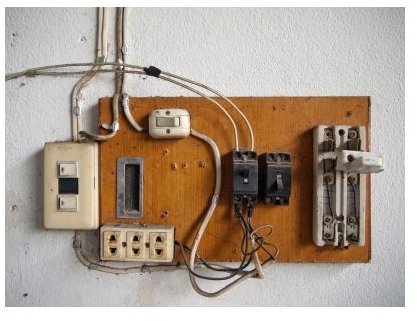Free Older Home Inspection Checklist - Part One
Inspection Checklist - What to Look For
There are many advantages in buying an older home. For example, you can get a good home at a price that is significantly below its market value. However, if you do not know how to go about it, an older home may cost you dearly, which is why you need an older home inspection checklist to help you make the right choices. The following are some of the things you should bear in mind when you are considering purchasing an older home.
Plumbing
Water plays a very important role in the home; hence you cannot take the plumbing system for granted. Homes that are older than twenty-five years usually have plumbing problems, with one of the greatest risks being the presence of lead.
The use of bronze, brass, and copper pipes was introduced by 1940 and there are high chances that houses constructed earlier contain lead in the plumbing systems. The copper pipes may also be joined by using lead solder and the bronze fixtures can leach lead.
A simple method of determining the type of material used in making the pipes is using a magnet. Bronze, brass, and copper do not attract magnet while both steel and iron do.
If the basement has telltale watermarks, it is a clear sign of faulty plumbing, which can result in flooding.
Walls
There are different things that you should look for in a wall. The first thing you will see is the painting. You can use faded paint to your advantage, for every painted surface starts deteriorating as soon as it has been worked on because of such elements as ultraviolet radiation. Although there are anti-oxidants and sun screens added to paint, they just slow down the process but do not stop it all together.
You can use faded or peeled paint as you bargain for the price of the older home. However, you need to take a closer look at the paint to determine things like separation of layers. Find out why the paint has separated from the base, for there may be some underlying problem that you should not ignore.
According to the American Home Inspector Directory, look at the system you are checking first, then its relative condition. Check the plaster on the wall and then examine it for any irregularities or cracks.
If there are any cracks on the wall, determine how far they go. It is not advisable to purchase an older home where you need to pull down a wall to erect a new one. What starts as pulling down of a wall may end up in repairing electrical and plumbing systems, which will push your repair costs up.
Electrical System

The next item on our older home inspection checklist is electricity. Electricity is very important in the home, not only because of its numerous uses but also due to the great risks involved in case of some faults. This is why the National Electrical Code (NEC) was developed as far back as 1897 to avoid the risks of fire and explosion.
The cover of the electrical service panel should be removed to check the conductors, fuses, and circuit breakers. Any discolored or blistered insulation is a sign of a problem that an expert should look into. Your home inspector should have the latest NEC data to ensure that everything is in order.
Garage
Whether the garage is the attached or detached type, you should also check it thoroughly for any structural damage. Check for any cracks or buckling on the garage floor.
If the garage is detached from the house, check its roof closely. Check where the downspouts drain water and use a screwdriver to check any areas that may have suffered from water damage. Look for any sagging in the walls or doors to determine risks of collapse.
The entrance from the house to the garage should be fire resistant in case of an attached garage. It should also be sealed tightly so that garage fumes do not get into the house.
Doors
Check all doors, paying particular attention to the main door. Open and close it to determine whether it scrapes the floor, for example. Check for air leaks that will make you use more fuel. Does it provide the kind of security you are comfortable with?
Windows
A simple way of checking the windows is to open and close them. Do they close easily and fit well in place? Do the locks function well? Remember that there are different kinds of windows, such as storm windows. If screens are missing, ask if the homeowner has them in storage.
Ceiling
For ceilings, some of the things you should look out for are water stains, sagging, and visible nails. Check the fans and lighting fixtures too.
This is not a comprehensive older home inspection checklist but it gives you a good idea of what to look for, at least before you hire a professional home inspector. Consider the cost of home inspection as an investment.
References
American Home Inspector Directory: Home Inspection Checklist - https://docs.google.com/viewer?url=https://www.edgecombecountync.gov/pdf/eservices/HomeInspectionChecklist.pdf&pli=1
Pictures courtesy of FreeDigitalPhotos.net
